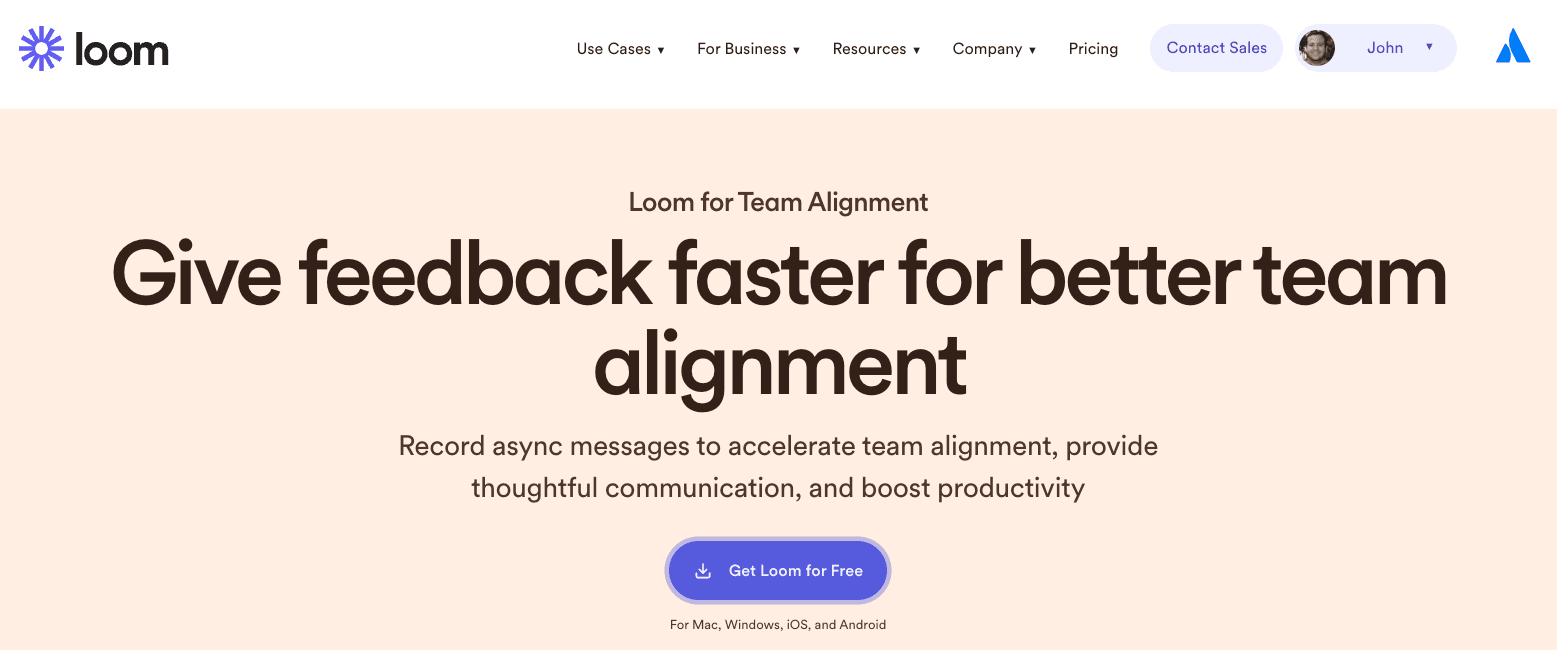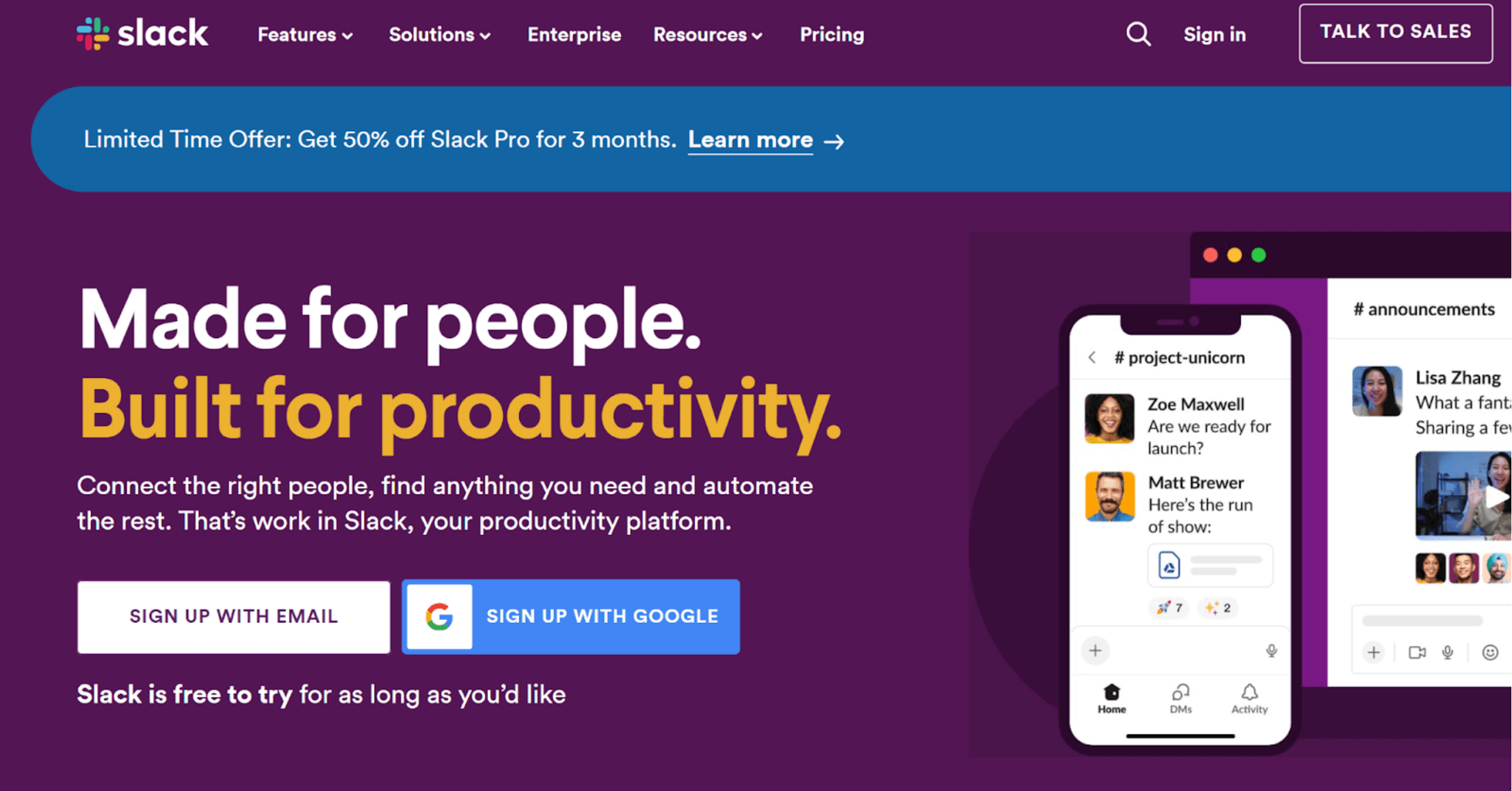If there’s one thing that gets in the way of productive work, it's poor communication between employees.
Great employee communication is vital to workplace satisfaction, resolving disputes or conflicts quickly and without further issues, and to creating a healthy and productive work environment.
Yet, despite the fact that employees are constantly communicating with one another, few organizations put a huge focus on improving how employees communicate.
We’re here to help you change that.
In this guide, we’re going to provide tips and tricks to improve employee communication and workplace productivity.
We’ll explain what employee communication is and why it's an important skill to develop. Then, we'll dive into five powerful strategies for improving communication between everyone in your workplace, leaders and employees alike.
What is employee communication?
Employee communication occurs any time the people in your organization share ideas, opinions, responses, information, or feelings.
It’s omnipresent in the workplace, whether employees engage with colleagues in their own department or with those who work in other business units.
Employee communication also includes interactions between managers and employees, and takes place in all formats of workplace communication:
Face-to-face discussions or meetings between team members
Video meetings or recordings used to facilitate remote work
Written communications, such as memos, emails, and messages sent via team communication platforms
Top-down communications from senior leadership teams
Comments and tags in employee collaboration tools
Employee engagement surveys and interviews
Why is employee communication worth prioritizing?
The employees in your organization are constantly communicating with one another. That’s unchangeable.
But people come into the workplace with different communication styles and varying opinions, which can be a cause of workplace conflict and even negatively impact company culture.
By prioritizing effective internal communication through the provision of employee training, guidelines, and advice from management on how to handle conflict, you can help to:
Improve the overall employee experience by reducing sources of tension between employees
Increase message comprehension, ideally improving team alignment
Create a more effective and productive work environment where works can openly communicate
5 strategies for better employee communication in any work environment
These five strategies are your secret weapons for fostering an environment of good employee communication.
They can be used on their own or combined to create a seriously effective employee communication strategy.
1. Teach employees to favor assertive over aggressive communication
One of the most important steps in developing communication skills is learning about the various forms of communication you can utilize, and how to favor one over the other.
The aggressive-assertive-passive model is a commonly used model for comparing effective communication methods.
Passive communication tends to manifest as employees not speaking up for themselves, being overly nice or accommodating, and having weak workplace boundaries. It often leads to feelings of powerlessness, poor self-esteem, and low levels of employee satisfaction.
Aggressive communication is the opposite. Aggressive communicators make what they want clear but do so in a way that is often perceived as hostile, mean, and without consideration for the desires or feelings of others.
Aggressive communicators tend to dominate passive communicators, but neither communication style is ideal for a healthy workplace.
Assertive communication can be seen as the middle ground between the previous two.
To communicate assertively, one must be clear and direct—but constructive, rather than dominant or attacking.
The DESC model is a good framework for helping your employees use assertive communication:
D - Describe the situation
E - Express the impact of emotion
S - Provide a solution
C - Conclusion
First, you describe the situation using only facts: “X, Y, and Z happened.”
Then, you express how this negatively impacted you, your work, or your team: “Because of that, I felt A, and we couldn’t do B.”
Then, you give the other person a chance to respond before moving on to a solution: “In the future, I’d like us to handle these situations by doing C.”
Once you’ve obtained agreement, you move on to the conclusion: “So we’ve agreed that when X happens, you’ll do C.”
2. Consider when asynchronous communication is (and isn’t) appropriate
Today’s world of work offers a variety of opportunities to communicate asynchronously (not in real-time), from instant messaging apps like Slack to video recording solutions like Loom.
To ensure that your team is using these employee communication apps effectively, it’s a good practice to provide some guidelines as to when asynchronous communications should and shouldn’t be used.
For example, you may ask your employees to consider the level of interaction they’re looking for from a given piece of communication.
If they’re simply delivering a weekly check-in or update, async is probably the best move, as there’s less need to pull people out of deep work to attend a live meeting.
If, on the other hand, the intended communication is a question that will require brainstorming, collaboration, and the airing of concerns, then a synchronous meeting is likely to be more appropriate.
To aid this decision-making process, create a brief guide or flowchart accessible via your company intranet or workplace wiki that employees can access when they need to determine the appropriate communication method.
Check out our guide for a more detailed walkthrough: When to Choose Synchronous Vs. Asynchronous Communication.
3. Foster a culture of “self-resolution first”
Once your employees have assertive communication under their belt, they’re far more equipped to resolve conflicts and challenges between team members themselves.
Yes, some issues will still need to be raised to a manager or senior leader.
But a lot of the time, conflicts among employees are brought to leadership without those team members first attempting to resolve the issue themselves.
By introducing a policy of “self-resolution first,” you free up your managers from unnecessary work.
This is also a form of employee empowerment and often ends in better resolution.
That's because when conflicts like these are brought to a manager to make a decision, the common result is that one side walks away feeling like they have lost.
By having the chance to resolve the conflict between them and arrive at a reasonable middle point, there’s a greater likelihood that the two parties will feel satisfied that their point of view was heard and taken into account in the compromise.
This is also an effective policy to implement as part of your remote work strategy, where issues that need to be resolved by leadership often cause delays and drops in productivity while team members wait for a response.
4. Improve cross-departmental collaboration
A major cause of conflicts in the workplace is the fact that employees don’t understand exactly what goes on in other departments.
Many organizations, especially larger ones, are incredibly siloed.
Sales team members, for example, are rarely exposed to what goes on in the finance department. As such, they don’t understand why finance has particular policies or processes in place, which are often perceived by the salesperson as restrictive to revenue growth.
Naturally, when one person doing their job gets in the way of another person doing their job, conflicts arise.
One great way to improve your workplace communication and minimize the likelihood of such conflicts is to expose employees to other business units.
You can do this through:
Intentional sharing and presentations
Buddy systems and shadowing
Exposure to other business units during new employee onboarding
Cross-functional teams during new projects
5. Consider the rule of 150
Similar to the issue of departmental silos is the fact that many organizations are simply too big to enable effective collaboration.
Dunbar’s number (which is better remembered as the rule of 150) is a “magic number” proposed by British anthropologist Robin Dunbar. His research demonstrated that the maximum number of meaningful relationships we really maintain is 150.
Applied to the workplace, this generally means that in organizations with headcounts above 150, your employees aren’t going to know everyone.
They might know people by name, but they probably won't have a relationship with them other than knowing what their job title is.
This hampers productivity by preventing effective collaboration.
The preferred solution here is to limit headcount in a given location. Rather than continuously expanding your headquarters, consider breaking off into subgroups or tribes at different locations.
Pro tip: This also has the added benefit of a bit of friendly inter-location competition, something that itself can fuel innovation and productivity.
4 popular employee communication tools
Great employee communication comes not only from policies, procedures, and training. You also need to empower your team members to communicate effectively using modern workplace tools.
Here are four of our favorites.
1. Video communications with Loom
Loom is the ideal tool for employee communication.
It can transform traditional face-to-face communication and replace it with asynchronous video, giving employees more time back in their day and reducing the number of meetings required.
Plus, you can use Loom to avoid the communication issues that come with text-based messaging or use Loom and Slack together for the ultimate workplace communication combo.

2. Workplace chat on Slack
Slack is the most ubiquitous employee communication tool.
It's primarily a text-based messaging solution and mobile app, but it also supports voice messaging, channels, and groups and offers a ton of great integrations.

3. Company intranet within Guru
Guru is a three-pronged tool, offering a workplace wiki, intranet, and enterprise search functionality all in one.
Leadership can use Guru to capture employee feedback, provide easy access to standard operating procedures (SOP) documentation, and help team members leverage AI to answer burning questions quickly.

4. Team bonding via Donut
Our final suggestion, Donut, is a unique app for Slack designed to build trust and affinity between co-workers.
Donut automatically pairs up employees on a weekly basis (or however you set it) for a lunch meetup or dual work session, supports the onboarding process with training and peer mentorship programs, and can be used to execute mentorship programs.

Loom puts the employee back in employee communication
Perhaps the biggest threat to employee communication today is the fact that so much of it happens using the written word.
When facial expressions, gestures, and tone of voice are invisible, written communications regularly get misinterpreted. This leads to conflict, double-handling, and low productivity.
Loom, our AI-powered video recording, messaging, and storage solution, helps change that.
Empower employees to replace easily-misunderstood written text with a short, descriptive video and watch how much faster work gets done (with fewer workplace conflicts).